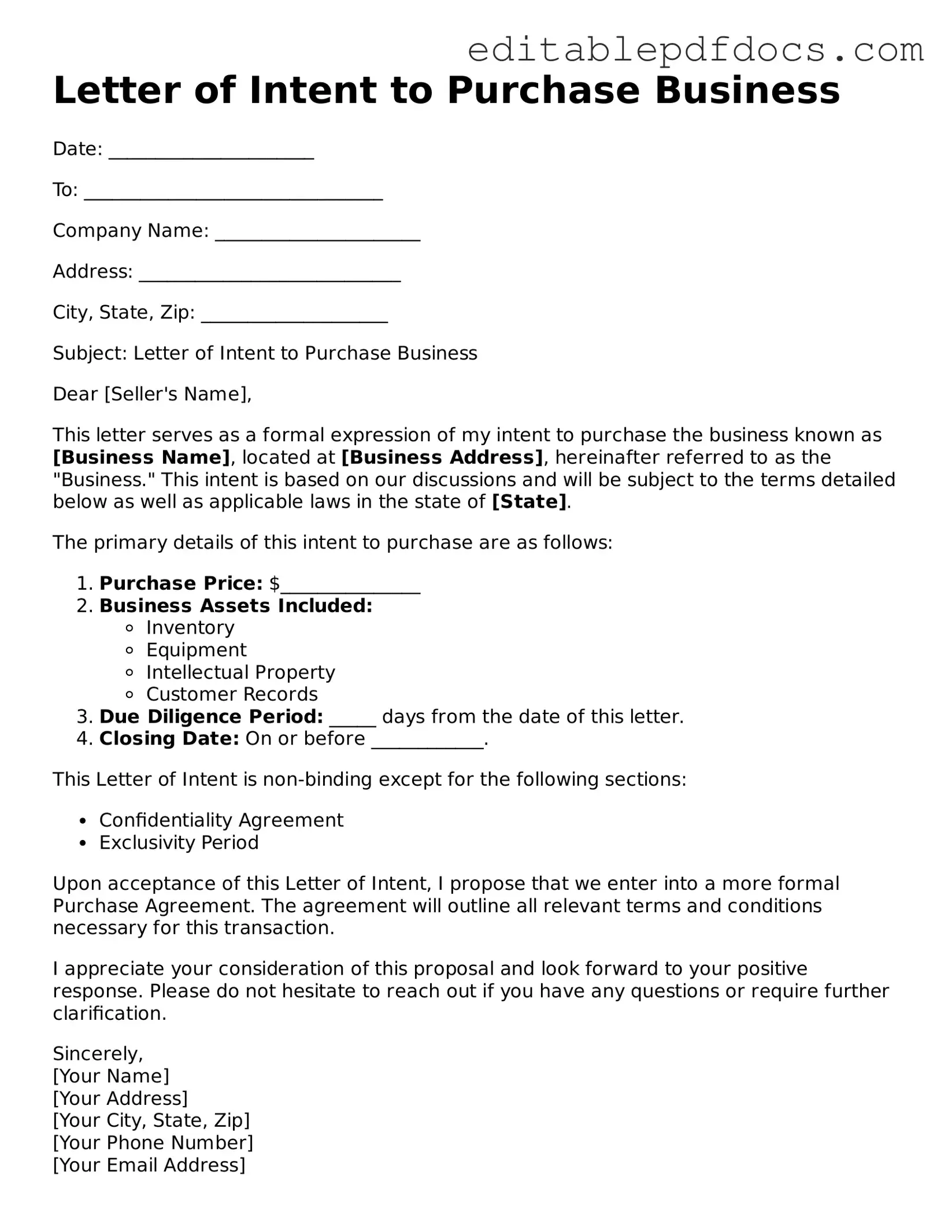When filling out a Letter of Intent to Purchase a Business, individuals often make several common mistakes that can lead to misunderstandings or complications down the line. One significant error is failing to include essential details about the business being purchased. This includes the business name, address, and specific assets involved in the transaction. Without this information, the intent may be unclear, leading to potential disputes later.
Another frequent mistake is not clearly outlining the terms of the sale. Buyers should specify the purchase price, payment structure, and any contingencies that might apply. Omitting these details can create confusion and may result in disagreements between the buyer and seller regarding the expectations of the transaction.
Additionally, many individuals neglect to include timelines for the transaction. Establishing a timeline helps both parties understand when certain actions must be completed, such as due diligence or closing dates. Without a clear timeline, the process can drag on unnecessarily, causing frustration for both the buyer and the seller.
In some cases, people fail to consult with professionals before submitting the Letter of Intent. Legal and financial advisors can provide valuable insights and help ensure that the document is comprehensive and accurate. Bypassing this step may result in overlooking critical aspects of the transaction.
Another common oversight is not addressing confidentiality. If sensitive information about the business is shared during negotiations, it is crucial to include a confidentiality clause in the Letter of Intent. This protects both parties and fosters a trusting environment for discussions.
Lastly, individuals sometimes forget to review the document thoroughly before submission. Errors in spelling, grammar, or factual information can undermine the professionalism of the Letter of Intent. Taking the time to proofread and ensure accuracy is vital for making a positive impression and setting the stage for a successful negotiation.
